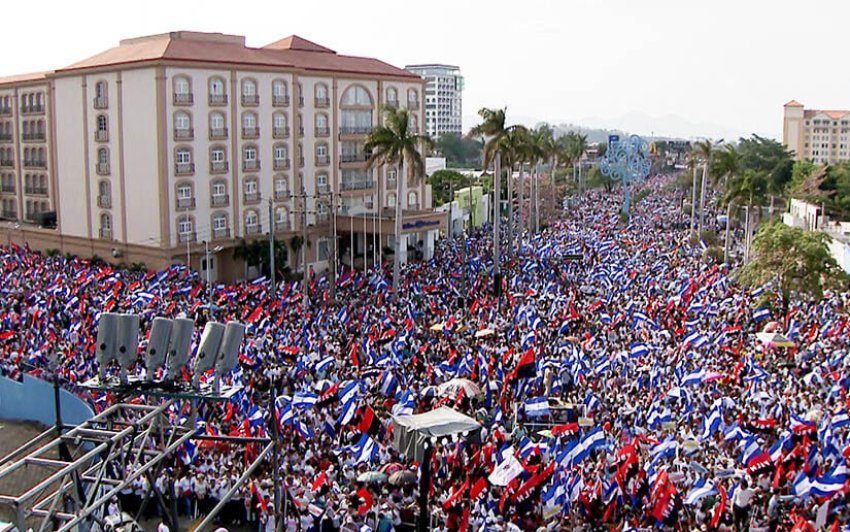
The combined International Workers Day and memorial rally for Tomas Borge, a cofounder of the leftist Sandinista National Liberation Front (FSLN), held in the capital Managua on April 30 seems to have vindicated the Sandinista government of President Daniel Ortega, with estimates of the turnout varying between 100,000 to 200,000 supporters.
The march came a week after violent protests rocked the country for five days starting on April 18. Armed rightist mobs demanded an end to the “Ortega dictatorship”. Ortega was re-elected as president in 2016 with 72% of the vote.
Although figures vary as to the number of dead as a result of the violence, most put the figure at about 20-30, including three police officers and a journalist. The international media attributed the casualties to police violence, ignoring the fact that 128 police officers were injured during the clashes and that the journalist worked for a Sandinista news channel.
Other casualties included bystanders, government supporters and security personnel trying to protect buildings and institutions such as hospitals, schools and government offices that were attacked for being symbols of the achievements of the government.
It appears as though the outbreak of violence had been in the planning for months and was well-funded. Thousands of mortar shells were fired at police from homemade mortars, while violent elements were bussed from the flashpoint in Managua to regional centres during the protests.
The trigger for the protests was the government’s announcement of social security reforms on April 16 after the Superior Council of Private Enterprise (COSEP), the main business council, had walked out of negotiations.
The government baulked at COSEP’s proposal to cover the deficit in Nicaragua’s social security system – incurred by previous governments – by raising the pension age, cutting pensions by 20% (in line with recommendations from the International Monetary Fund) and eliminating reduced pensions for people who could not pay the full contribution (affecting seasonal workers).
Other COSEP proposals were to eliminate the indexation of the pension to the exchange rate, privatise social security clinics and abolish the minimum pension (pegged to the minimum wage) and Christmas bonus.
The Sandinistas instead proposed that the deficit be covered by a small rise in contributions by employers (3.25%) and employees (0.75%), and that a 5% cut to pensions be implemented to help fund universal health coverage for pensioners.
A hugesocial media campaign jumped on this cut to the pension to depict it as a government rip-off.
Ortega responded to rising resentment by withdrawing the reforms and recalling all interested parties to the negotiating table, a move that helped restore calm to the country. The level of violence has led to a backlash against the instigators, as evidence by the turnout for the pro-Sandinista march.
COSEP has subsequently expressed dismay at the outcome of the protests it initially encouraged and supported.
Sandinista spokespeople have said they too have learned from the experience, pledging to ensure that future policies are better explained and understood by the populace before being legislated.
While the government has survived and perhaps been strengthened by recent events, there is concern that there could be an escalation in attempts to destabilise the government with the backing of the United States.
Many believe it will almost certainly lead to the passage of the Nicaragua Investment Conditionality Act (known as the NICA, or “Kneecap”, Act) in the US Congress. The act seeks to cut off Nicaragua’s access to loans from international financial institutions that are vital to funding its popular social programs.
For now, the US has issued travel warnings for Nicaragua at a time when the country’s tourism industry is thriving. Nicaragua has, until now, been a destination of choice among backpackers, surfers and budget travellers as an eco-friendly place with a tranquil ambience that contrasts with the violence of neighbouring Central American countries.